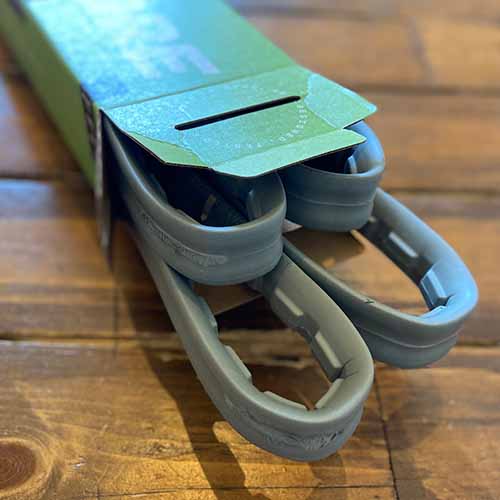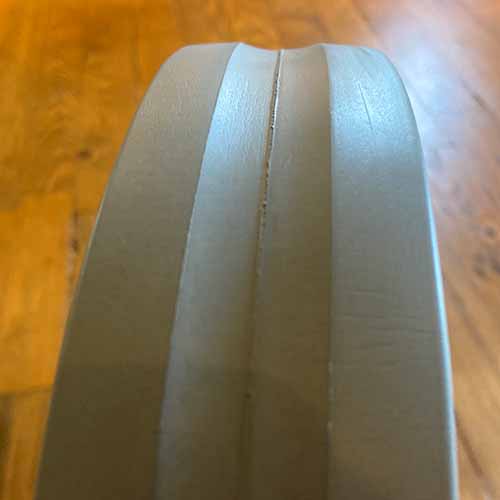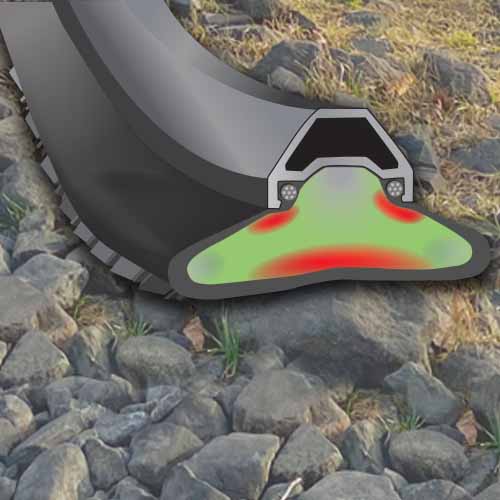The bike industry is a mecca of innovation.
There is a continuous release of the next best must-have gadget, gear, or piece of equipment promising to shave seconds off our rides or grams off the bike. Or just something to make life a little bit easier. If you have an unlimited budget and multiple bikes to try all the new stuff, that’s great; however, for many, riders’ cost is a factor for entry into the latest product releases in the market. We think tire inserts have a bright future and why you might want to add them to your gear arsenal.
Tire Insert History
Tire Inserts are not new ideas; they originated from motocross. Michelin engineered a foam ring insert (Bib Mousse) to replace the regular air-filled tube used in the enduro and rally raid events back in 1984. The mousse was Michelin’s answer to getting rid of the pinch flat entirely by placing the solid foam insert in the tire, which had the desired effect of no air in the tire, therefore no flats…WIN! But it also came with the downside. Using the mousse inserts resulted in the inability to change the tire pressure, which is needed to adjust for riding on different terrains, conditions, and even your riding style. This type of insert also came with a hefty weight penalty, which is fine when you have an engine to drag around the track but not so great when that motor is your legs. Regardless, this insert type never gained traction with the MTB, gravel, or road community.
Tire Inserts today
Today’s inserts take up roughly half the tire volume versus its predecessor, giving many of the mousse benefits but still allowing users to tune their tire pressures and keep weight down. Since their inception, Inserts have come a long way, with companies/engineers playing with different shapes, foams, and densities. With some inserts focusing on the rim protection side and others looking more toward improving ride quality as well as rim protection
What are tire inserts made of?
What exactly are Inserts made of, and what do they look like? The images above are a good representation of most inserts. The left is cut with a stamp; and is open-cell foam, creating lightness and protecting the rims. The right is a closed-celled dense foam/foam rubber molded with the same rim-protecting properties but also improves bike handling and feel.
Benefits of tire inserts
- Lower Tire Pressure
- Vibration Damping
- Rim Protection
- Increased Side Wall Support
Tire pressure
The advantage of running a lower tire pressure is it lessens the vibration and increases the absorption of energy transmitted from the surface. The tire absorbs the shock easier due to the ability to deform more efficiently as it encounters objects. Inserts make it possible to run with lower pressure, thus increasing traction and tire damping. Using inserts also helps to protect the rim, allowing the rider to run at lower tire pressure reducing the risk of damage to both the tires and rim.
Vibration damping
Your wheel and tire are the first part of your bike’s suspension system. While it has no dial to control it, the insert technology creates a spring and damper effect within your tire casings. The inserts do their job by dissipating the impact energy and damping trail chatter.
Rim protection
When tire inserts first came out, their most significant selling point was rim protection during hard impacts and rimming out (the tire deforms to the point of the rim, making contact with an object). The inserts act as a buffer between the tire and rim, helping dissipate the energy and protecting the rims.
Sidewall stability
Tire inserts also help with sidewall stability, like the CushCore inserts.
They allow you to run less tire pressure while offering sidewall support for rollover resistance. The inserts are somewhat stiff and push outwards against the sidewalls of the tire, adding rigidity to the sidewall and preventing the tires from blowing off the rims.
Cons of the inserts
- Add weight
- Mutes ride feel
- Hard to remove tire from Rim
Weight
Inserts add weight, slowing you down, making ascents less efficient. Riders can offset the added weight of the inserts by using a lighter casing and faster treads which help lower the rolling resistance. However, if weight matters and every gram counts, then inserts may not work for you.
Ride Feel
The dampening effect of inserts can be a negative to some riders—especially those who like to feel every bit of the ride. The connection to the earth and the terrain being ridden is muted, and to some this is not a benefit.
Tire Replacement
Some inserts are easier to remove and install than others. Depending on your experience with changing tires with inserts, using inserts could be a daunting task.
In conclusion, we feel inserts are worth adding to your tool chest. If nothing else, give them a try and see if it adds to your ride. Happy trails.





